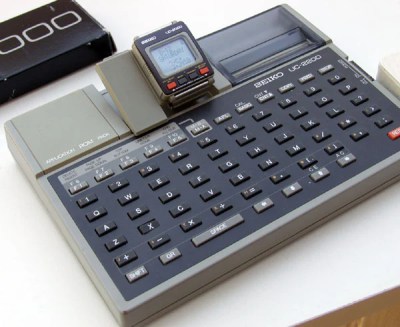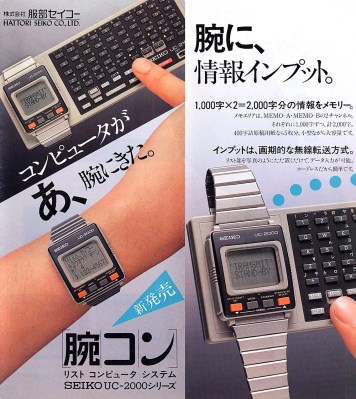When monitors around the world display a “Blue Screen of Death” and you know it’s probably your fault, it’s got to be a terrible, horrible, no good, very bad day at work. That’s likely the situation inside CrowdStrike this weekend, as engineers at the cybersecurity provider struggle to recover from an update rollout that went very, very badly indeed. The rollout, which affected enterprise-level Windows 10 and 11 hosts running their flagship Falcon Sensor product, resulted in machines going into a boot loop or just dropping into restore mode, leaving hapless millions to stare at the dreaded BSOD screen on everything from POS terminals to transit ticketing systems.
2024 Business Card Challenge: CardTunes Bluetooth Speaker
A business card form factor can be quite limiting, but that didn’t stop [Schwimmflugel] from creating CardTunes, an ESP32-based Bluetooth audio speaker that tried something innovative to deliver the output.
What’s very interesting about this design is the speaker itself. [Schwimmflugel] aimed to create a speaker out of two coils made from flexible circuit board material, driving them with opposite polarities to create a thin speaker without the need for a permanent magnet.
The concept is sound, but in practice, performance was poor. One could identify the song being played, but only if holding the speaker up to one’s ear. The output was improved considerably with the addition of a small permanent magnet behind the card, but of course this compromised the original vision.
Even though the concept of making a speaker from two flexible PCB panel coils had only mixed success, we love seeing this kind of effort and there’s a lot to learn from the results. Not to mention that it’s frankly fantastic to even have a Bluetooth speaker on a business card in the first place.
The 2024 Business Card Challenge is over, but judging by all the incredible entries we received, we’re thinking it probably won’t be too long before we come up with another sized-constrained challenge.
Continue reading “2024 Business Card Challenge: CardTunes Bluetooth Speaker”
Seiko Had A Smartwatch In 1984
You might think of the smartwatch era as beginning with Apple, relatively recently. Or, you might think back to those fancy Timex models with the datalink thing going on in the 1990s. Seiko can beat them all, though, with its UC-2000 smartwatch that debuted all the way back in 1984.

The UC-2000 very much looks cutting edge for its era, and absolutely ancient today. It featured a 4-bit CPU, 2 kilobytes of RAM, and 6 kilobytes of ROM. Display was via a simple 10×4 character LCD in a rectangular form factor, with four buttons along the bottom. Branded as a “personal information processor,” it was intended for use with the UC-2100 dock. This added a full physical QWERTY keyboard that interacted with the UC-2000 when the two were combined together. Alternatively, you could go for the UC-2200, which not only had a keyboard but also a thermal printer to boot. Oh, and ROM packs for Microsoft Basic, games, or an English-to-Japanese translator.
 What could you do on this thing? Well, it had basic watch functions, so it told the time, acted as a stop watch, and an alarm, of course. But you could also use it to store two memos of up to 1000 characters each, schedule appointments, and do basic calculations.
What could you do on this thing? Well, it had basic watch functions, so it told the time, acted as a stop watch, and an alarm, of course. But you could also use it to store two memos of up to 1000 characters each, schedule appointments, and do basic calculations.
The one thing this smartwatch was missing? Connectivity. It couldn’t get on the Internet, nor could it snatch data from the ether via radio or any other method. By today’s measures, it wouldn’t qualify as much of a smartwatch at all. Moreso a personal organizer that fit on the wrist. Still, for its day, this thing really was a whole computer that fit on your wrist.
Would you believe we’ve seen the UC-2000 before? In fact, we’ve even seen it hacked to play Tetris! Video of that wonderful feat after the break.
Continue reading “Seiko Had A Smartwatch In 1984”
Congratulations To The 2024 Business Card Challenge Winners!
When you ask a Hackaday crowd to design a business card, you should expect to be surprised by what you get. But still, we were surprised by the breadth of entries! Our judges wracked their brains to pick their top ten, and then we compared notes, and three projects rose to the top, but honestly the top ten could have all won. It was a tight field. But only three of the entries get to take home the $150 DigiKey gift certificates, so without further ado…
Continue reading “Congratulations To The 2024 Business Card Challenge Winners!”
Keebin’ With Kristina: The One With The 24-Hour Macro Pad
They say Rome wasn’t built in a day, but this great little music-controlling macro pad by [nibbler] actually was. Why? Because as Hackaday’s own [Donald Papp] reminded us, we all need a win sometimes, especially as projects drag on and on without any end in sight.

One-day turnaround usually means using parts on hand and limiting oneself to already-learned skills and techniques. No problem for [nibbler], who, armed with an Arduino Leonardo Tiny and a some colorful push buttons, set about designing a suitable enclosure, and then putting it all together. Was this a win? [nibbler] says yes, and so do I.
Continue reading “Keebin’ With Kristina: The One With The 24-Hour Macro Pad”
A 64-bit X86 Bootloader From Scratch
For most people, you turn on your computer, and it starts the operating system. However, the reality is much more complex as [Thasso] discovered. Even modern x86 chips start in 16-bit real mode and there is a bit of fancy footwork required to shift to modern protected mode with full 64-bit support. Want to see how? [Thasso] shows us the ropes.
Nowadays, it is handy to develop such things because you don’t have to use real hardware. An emulator like QEMU will suffice. If you know assembly language, the process is surprisingly simple, although there is a lot of nuance and subtlety. The biggest task is setting up appropriate paging tables to control the memory mapping. In real mode, segments have access to fixed 64 K blocks of memory unless you use some tricks. But in protected mode, segments define blocks of memory that can be very small or cover the entire address space. These segments define areas of memory even though it is possible to set segments to cover all memory and — sort of — ignore them. You still have to define them for the switch to protected mode.
In the bad old days, you had more reason to worry about this if you were writing a DOS Extender or using some tricks to get access to more memory. But still good to know if you are rolling your own operating system. Why do the processors still boot into real mode? Good question.
Hackaday Links: July 14, 2024
We’ve been going on at length in this space about the death spiral that AM radio seems to be in, particularly in the automotive setting. Car makers have begun the process of phasing AM out of their infotainment systems, ostensibly due to its essential incompatibility with the electronics in newer vehicles, especially EVs. That argument always seemed a little specious to us, since the US has an entire bureaucracy dedicated to making sure everyone works and plays well with each other on the electromagnetic spectrum. The effort to drop AM resulted in pushback from US lawmakers, who threatened legislation to ensure every vehicle has the ability to receive AM broadcasts, on the grounds of its utility in a crisis and that we’ve spent billions ensuring that 80% of the population is within range of an AM station.


















